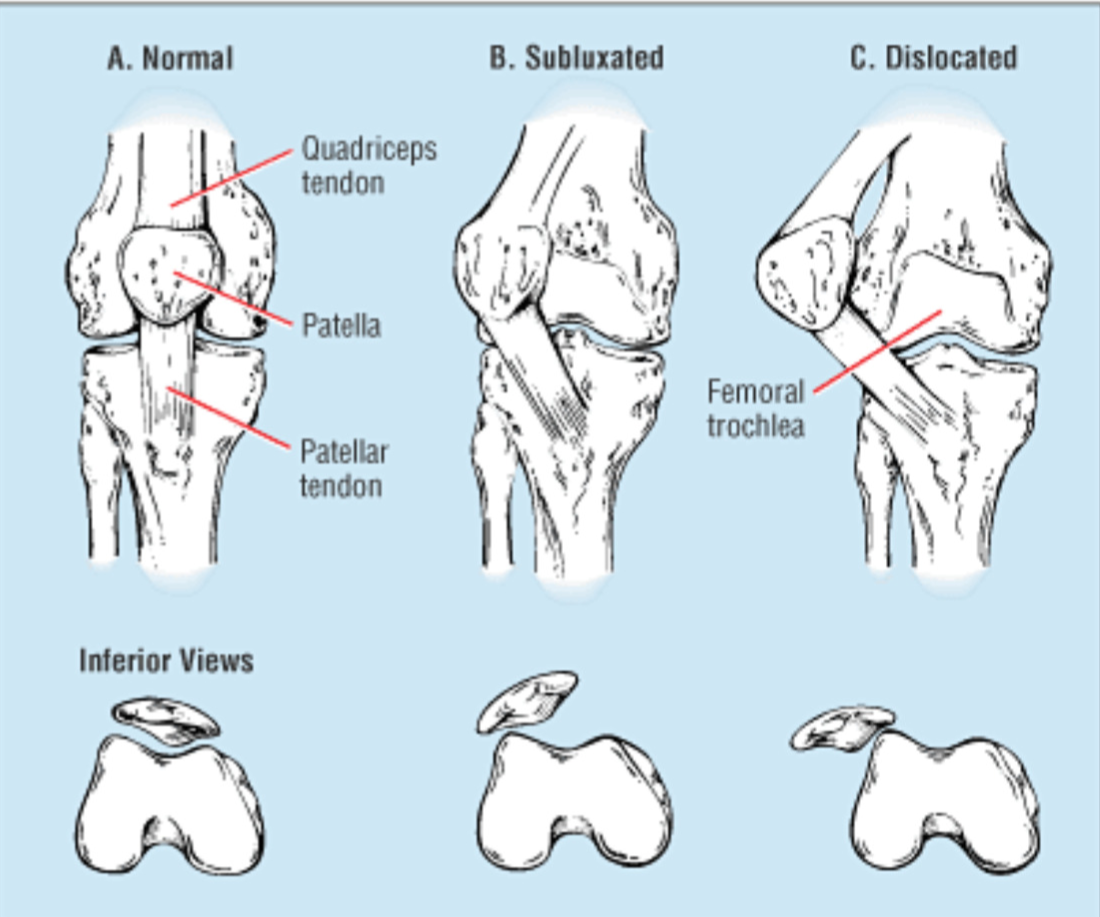Tibial Tubercle Transfer and Medial Patella- Femoral Ligament Reconstruction
A frequent cause of knee pain and knee disability is patellofemoral instability. Patellofemoral instability can be defined in different ways. One way is when the patient has undergone a traumatic dislocation of the patella. It can also be described a sign on physical examination, signifying the ability of the patella to be translated out of the trochlear groove of the femur in a passive manner. Moreover, patellofemoral instability can be a symptom, when the patient gives a feeling that the knee “gives way’’. This feeling occurs when the patella slips out of the trochlear groove.
Majority of the time the direction of dislocation is LATERAL (towards the outside). Initially the treatment of this condition can be Non- Operative but in cases where there is recurrent subluxation/dislocation due to abnormal biomechanics - surgery may be the only way to remedy the situation.
Patients experience anterior knee pain and episodes of mechanical instability. The pain can be aggravated by activities such as up and down the stairs, sports such as running, hopping and jumping, and changing direction. Upon functional assessment the patient may struggle with control of the patella, resulting in the patella being pull from midline
Risk factors
- Insufficient deep articular surface (trochlea dysplasia)
- Insufficient distance between tibial tuberosity and the trochlear groove
- Insufficiency of the MPFL
- Patella alta- Long patella tendon therefore the patella sits very high.(engagement into the trochlea does not occur in the early phase of knee flexion, thus potentiating instability at the patellofemoral joint)
- Knee valgus (knocked knee) an increased Q-angle can affect the patella tracking.
- Inadequate VMO (medial muscle)
- A lesion of the medial retinaculum (previous dislocation)


The stability of the patellofemoral joint relies on the tenuous interplay of soft tissue and bony factors. Anatomic risk factors for instability include a shallow trochlea, an abnormally lateral tibial tubercle position, patella alta, hypermobility, or a secondary injury to the medial patellofemoral ligament (MPFL). There is an increasing interest in restoring normal anatomy to achieve stability, and at times more than 1 abnormality exists. Dr Hazratwala describes his surgical technique for combining a tibial tuberosity transfer and an MPFL reconstruction.
For patient information sheet please click below
Sub-Menu
- Adult Total Hip Replacements
- Hip Resurfacing Arthroplasty
- Adult Total Knee Replacements
- Adult Revision Hip And Knee Replacements
- Unicompartmental Knee Replacement
- Anterior Cruciate Ligament Reconstruction
- Ankle Reconstruction
- Foot Disorders
- HTO (High Tibial Osteotomy)
- Lower Limb Trauma
- OATS (Osteochondral Autologous Transplantation Surgery)
- Trochanteric Bursitis Surgery
- Knee Arthroscopy
- Surgery for Patella Instability
- Bone Tendon Bone Allograft ACL Reconstruction